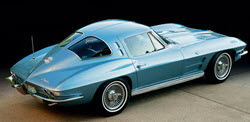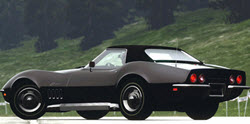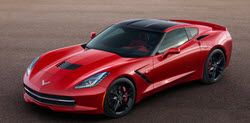The role of Zora Arkus-Duntov, the “Father of the Corvette.”
Zora Arkus-Duntov: The Driving Force Behind the Chevrolet Corvette
Zora Arkus-Duntov, a towering figure in automotive engineering, is often credited as the “Father of the Corvette.” His life and career, spanning continents and industries, have left a permanent mark on the history of the Chevrolet Corvette—a vehicle that has become synonymous with American sports car excellence. Born in Belgium and trained in Germany, Arkus-Duntov brought a unique set of skills and an unparalleled passion for speed to the American automotive landscape, particularly in his efforts to transform the Corvette from an underperforming sports car to an icon of the industry.
Early Life and Career
Born in 1909, Zora Arkus-Duntov’s early years laid the foundation for his prolific career in automotive engineering. His passion for automobiles was sparked by his family’s involvement in the automotive business in Germany. This early exposure to cars ignited a deep interest in their mechanics, steering Arkus-Duntov to pursue a formal education in mechanical engineering in Germany. His expertise in engineering would later become pivotal in his work with the Chevrolet Corvette.
Arkus-Duntov’s life took a decisive turn after World War II when he immigrated to the United States. The post-war era was a time of rapid industrial growth and innovation, particularly in the automotive sector. This environment provided Arkus-Duntov with the perfect opportunity to apply his engineering skills and fulfill his passion for high-performance vehicles. In the early 1950s, this journey led him to join General Motors (GM), marking the beginning of a historic chapter in automotive history.
The Initial Involvement with GM
Upon joining General Motors in 1953, Arkus-Duntov was almost immediately drawn to the then-struggling Chevrolet Corvette project. At that time, the Corvette was a nascent model, experiencing a myriad of challenges, from underwhelming sales to lackluster performance. It was clear that the car needed revitalization to compete effectively in the sports car market.
Seeing the potential in the Corvette, Arkus-Duntov focused on enhancing its performance. Unlike other vehicles that prioritized style or comfort, he envisaged a sports car that delivered on speed and agility, traits vital for capturing the hearts of driving enthusiasts. His commitment to transforming the Corvette became the driving force behind numerous strategic and mechanical innovations that elevated the vehicle’s status over time.
Engineering Innovations
Arkus-Duntov’s contributions to the Corvette project were nothing short of transformative. One of his landmark innovations was the development of what became known as the “Duntov camshaft.” This innovation significantly boosted the power output of the Corvette’s engine, addressing the performance concerns that initially plagued the model. The camshaft wasn’t just a technical upgrade; it symbolized the shift towards creating a car that could hold its own in serious racing competitions, thereby refashioning its public image as a credible sports car.
Another critical decision made by Arkus-Duntov was the introduction of a V8 engine into the Corvette lineup, which replaced the original inline-six engine. The switch to a V8 was a game-changer. It vastly increased the vehicle’s horsepower, thrusting it into direct competition with European sports cars that had previously dominated the segment. This move dramatically improved the Corvette’s performance credentials and prestige, setting a new standard for American sports cars.
The changes steered by Arkus-Duntov had far-reaching effects, bolstering Corvette’s reputation as a high-performance vehicle. His work was not simply a series of isolated improvements, but rather a concerted effort to push the boundaries of what the Corvette could achieve. For those seeking a deeper understanding of automotive evolution, Arkus-Duntov’s contributions to the Corvette serve as a compelling case study of how strategic engineering can transform a brand.
Establishing Corvette’s Racing Legacy
Arkus-Duntov’s vision for the Corvette extended well beyond refining its everyday performance; he was determined to see it excel on the racing circuit. A staunch advocate for motorsport involvement, he navigated the corporate and engineering challenges to ensure that the Corvette not only participated in racing events but also performed competitively. His efforts helped convince General Motors to support the development of high-performance Corvette models designed for racing.
Under his guidance, the Corvette began to feature in national and international racing events, gradually establishing a formidable presence. Arkus-Duntov’s dedication to racing underscored a broader vision—to solidify the Corvette’s status as an iconic American sports car. This vision proved successful as the Corvette went on to dominate race tracks, carving out a competitive legacy that continues into the modern era.
The impact of Arkus-Duntov’s work on the Corvette has endured well beyond his tenure at GM. His relentless pursuit of performance excellence laid the foundation for the Corvette’s ongoing success and innovation. This legacy is a testament to how immersive engineering and strategic foresight can transform a struggling model into a symbol of engineering prowess and cultural significance.
Beyond just the Corvette, Arkus-Duntov’s influence can be seen across the automotive industry. The principles he applied—an unwavering commitment to innovation, performance, and competitive spirit—continue to inspire automotive design and engineering today. For enthusiasts and historians alike, examining the broader implications of Arkus-Duntov’s work offers valuable insights into the evolution of vehicle design and the ongoing quest for automotive excellence.



